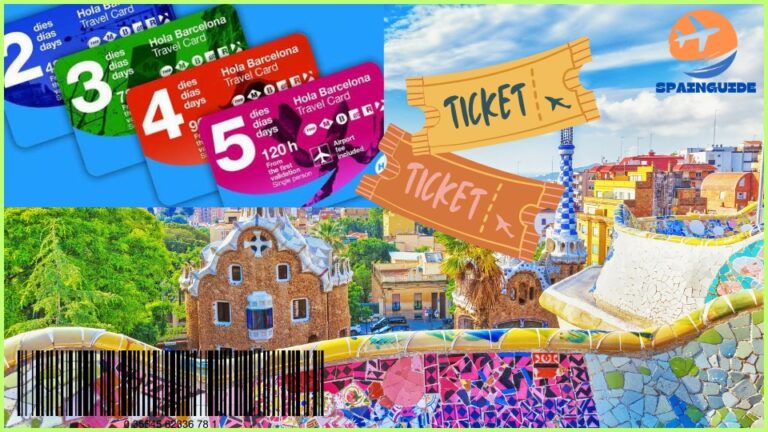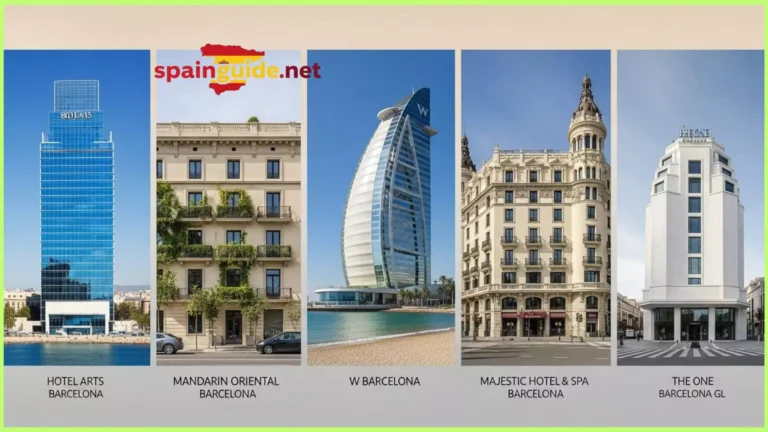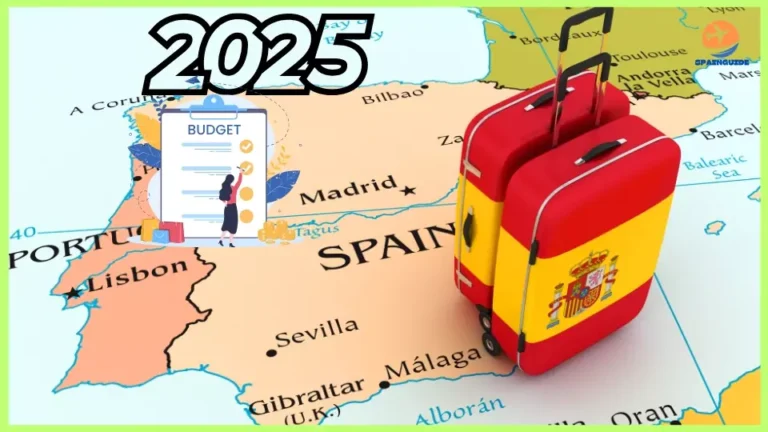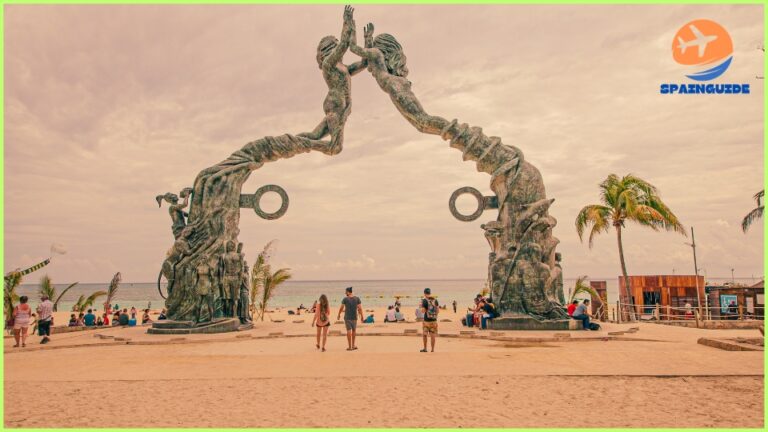Whether travelers are attracted by the animated streets of Madrid, the quiet beaches of Costa Brava, or the ruins of Andalusia, diverse Spain-its landscape, history, culture, and cuisine among the best in the world has an ace up its sleeve to amaze visitors. Within this guide, you’ll find everything that might be useful to make your Spanish adventure as interesting as possible: travel tips, cultural insights, main sights, and more.
1. Best Time to Visit Spain
Spain’s climate varies dramatically depending on the region, so the best time to visit depends on your preferences:
- Spring (March to May): Temperatures are mild across the country, making it a perfect time to explore the cities, beaches, and countryside. The famous Feria de Abril (April Fair) in Seville and the Fiesta de San Isidro in Madrid are highlights of this season.
- Summer (June to August): Ideal for beach lovers and those seeking festivals, although temperatures in southern Spain (like Seville or Granada) can soar to extreme highs. Coastal regions such as Costa Brava, Costa del Sol, and the Balearic Islands are perfect for a summer vacation.
- Autumn (September to November): The weather remains warm, especially in the south, with fewer crowds. It’s also harvest season, so visiting vineyards or attending wine festivals in La Rioja and Navarra is highly recommended.
- Winter (December to February): Best for those who enjoy winter sports in the Pyrenees or Costa Brava’s milder weather. Major cities like Madrid and Barcelona are less crowded during this time, allowing for a more relaxed experience.
2. Getting Around Spain
A. Transportation by Air
Spain has an extensive network of airports with major international gateways in cities like Madrid (Adolfo Suárez Madrid–Barajas Airport), Barcelona (El Prat), and Palma de Mallorca. Domestic flights are frequent and affordable, allowing for easy travel between major cities and islands.
B. Trains
Renfe operates an extensive and high-speed train network, including the famous AVE (Alta Velocidad Española) trains, which connect cities such as Madrid, Seville, and Barcelona. Trains are comfortable, efficient, and a scenic way to travel across the country.
C. Public Transportation
Spain’s metro systems (in Madrid, Barcelona, and Valencia) are reliable and budget-friendly for getting around large cities. Bus services also complement metro systems and are ideal for traveling to more remote areas.
D. Car Rentals
For exploring rural areas or the countryside, renting a car gives you freedom. Spain’s road network is excellent, and driving is relatively easy, though be mindful of parking regulations in cities.
3. Essential Spanish Destinations
A. Madrid
As the capital of Spain, Madrid is a cultural and historical hub. Don’t miss the iconic Prado Museum, the grand Royal Palace, and the sprawling Retiro Park. Wander through the Plaza Mayor, indulge in tapas, and enjoy the vibrant nightlife in areas like Malasaña and Chueca. Madrid is also an ideal base for day trips to nearby cities like Toledo, Segovia, and El Escorial.
B. Barcelona
Barcelona, a bustling coastal city, is known for its distinctive architecture, especially the surreal works of Antoni Gaudí. The Sagrada Familia, Parc Güell, and Casa Batlló are must-see sites. Explore the medieval streets of Barri Gòtic, stroll down La Rambla, and enjoy the beaches of Barceloneta. The city offers a blend of modern art, beach relaxation, and Catalan culture.
C. Seville
Seville is the heart of Andalusia, known for flamenco, bullfighting, and its incredible architecture. Visit the Alcázar of Seville, a stunning Moorish palace, and the Seville Cathedral, the largest Gothic cathedral in the world. Don’t forget to stroll through the picturesque Barrio Santa Cruz and enjoy a traditional flamenco show.
D. Granada
The jewel of Andalusia, Granada is home to the awe-inspiring Alhambra, a Moorish fortress with beautiful gardens, courtyards, and palaces. Explore the Albaicín neighborhood, with its narrow streets and whitewashed houses, and enjoy sweeping views of the Sierra Nevada mountains.
E. Valencia
Located on Spain’s Mediterranean coast, Valencia is known for its futuristic architecture and vibrant arts scene. Visit the City of Arts and Sciences, explore the old town with its La Lonja (a UNESCO World Heritage site), and relax on the sandy beaches.
F. The Balearic Islands
Consisting of Mallorca, Ibiza, Menorca, and Formentera, these islands are famous for their beautiful beaches, crystal-clear waters, and lively nightlife. Mallorca offers mountainous landscapes and historic sites, while Ibiza is known for its vibrant party scene.
G. The Canary Islands
Located off the northwest coast of Africa, the Canary Islands are a paradise for beach lovers and adventure seekers. The islands offer volcanic landscapes, lush forests, and unique wildlife. Popular spots include Tenerife, Gran Canaria, and Lanzarote.
H. San Sebastián
A seaside gem in the Basque Country, San Sebastián is famed for its beautiful beaches, such as La Concha, and its food scene, particularly pintxos (Basque tapas). The city is also home to Monte Urgull, a hill offering panoramic views of the coastline.
4. Spanish Cuisine: A Culinary Journey
Spanish cuisine is diverse, with each region offering its own specialties. Some key dishes to try:
- Paella: Originating from Valencia, this iconic rice dish often includes seafood or meat. The most famous type is paella valenciana, with chicken, rabbit, and vegetables.
- Tapas: Small plates of food that range from patatas bravas (fried potatoes with spicy sauce) to jamón ibérico (cured ham). Tapas are perfect for sampling a variety of flavors.
- Tortilla Española: A Spanish omelet made with potatoes, eggs, and onions. It’s a simple but flavorful dish, often served as a tapa.
- Gazpacho: A refreshing cold tomato soup from Andalusia, perfect for hot summer days.
- Churros con Chocolate: A sweet treat, churros are fried dough pastries served with thick hot chocolate for dipping.
- Sangria: A famous Spanish punch made with red wine, fruit, and brandy, ideal for hot afternoons.
5. Spanish Festivals and Traditions
Spain is home to some of the most exciting and colorful festivals in the world:
- La Tomatina (Buñol): A giant tomato fight that takes place in August in the town of Buñol. It’s a fun, messy event that attracts tourists from all over the world.
- Running of the Bulls (Pamplona): Part of the San Fermín festival, this event involves participants running in front of a group of bulls. It’s dangerous, but it’s a unique cultural experience.
- Semana Santa (Holy Week): Celebrated across Spain, especially in Seville and Málaga, this week of religious processions is a dramatic and solemn event, featuring participants in traditional robes and carrying religious statues.
- Fallas (Valencia): A festival held every March, where giant effigies are created and then burned in celebration. It’s a feast for the senses with fireworks, parades, and music.
6. Cultural Etiquette and Tips
- Language: While Spanish (Castellano) is the official language, some regions, like Catalonia, the Basque Country, and Galicia, have their own regional languages (Catalan, Basque, and Galician). English is widely spoken in tourist areas, but learning basic Spanish phrases is appreciated.
- Siesta: Many shops and businesses, especially in smaller towns, close between 2 pm and 5 pm for a traditional siesta. While the practice is less common in big cities, it’s still part of the cultural fabric.
- Tipping: Tipping is not mandatory but appreciated. A small tip of 5-10% is common in restaurants, especially for good service.
- Dress Code: Spaniards take pride in their appearance, so dressing well is common, especially in cities like Madrid and Barcelona. Casual attire is fine for most occasions, but it’s advisable to dress up when going to a fine restaurant or for evening outings.
7. Practical Information
- Currency: Spain uses the Euro (€). Credit cards are widely accepted, but it’s advisable to carry some cash, especially in rural areas or for small purchases.
- Electricity: Spain uses type C and F plugs, and the standard voltage is 230V with a frequency of 50 Hz.
- Safety: Spain is generally very safe for travelers. However, petty theft (pickpocketing) can be a problem in crowded areas, especially in major cities and tourist hotspots.
- Health Insurance: Ensure you have travel insurance that covers health expenses in Spain. The country has a high standard of healthcare, but access to medical services may require proof of insurance for non-EU citizens.
8. Must-Do Activities in Spain
- Take a leisurely stroll in Madrid’s Retiro Park or along the Gran Vía.
- Experience a live flamenco performance in Seville.
- Hike in the Picos de Europa or the Sierra Nevada mountains.
- Visit the medieval Alhambra in Granada.
- Enjoy a wine-tasting tour in the La Rioja region.
- Explore the charming medieval villages of Castilla y León.
- Spend a day at the beach in Costa Brava or Costa del Sol.
- Try surfing or kite surfing in the Canary Islands.
Spain is a captivating destination that offers diverse experiences for every traveler. From its rich cultural heritage and culinary delights to its beautiful landscapes and lively festivals, there’s always something to explore. Whether you’re in the vibrant cities or the tranquil countryside, Spain will leave a lasting impression on you. Therefore, pack up your luggage and practice your Spanish phrasing for this adventure of a lifetime in probably one of the most excitingly rich cultural countries of the world.







